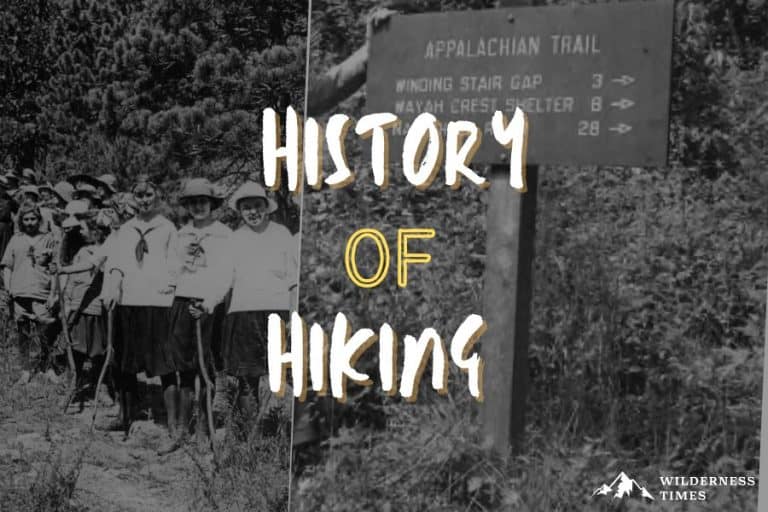To many outdoor enthusiasts, hiking is not just a recreational activity, but an integral part of their lives. But many don’t actually know the history of hiking.
It’s hard to believe that there were times when people wouldn’t walk in nature for simple pleasure.
But hiking has a relatively recent and surprising history. And today, we’ll go over the history of hiking to see how it has evolved over the years.
Table of Contents
ToggleEvolution Of Hiking
According to Encyclopedia Britannica, the definition of hiking is, “walking in nature as a recreational activity.”
So, while people have been walking long distances in nature for all of history, we can only call it hiking when it’s done solely for pleasure.
And while it is said that a Roman Emperor, Hadrian, made the first recorded pleasure hiking event in history during the second century, it didn’t exactly catch on at that time.
So surprisingly, we can say that hiking is a rather recent development, with its roots only going back a couple of centuries.
Hiking In The 1800s
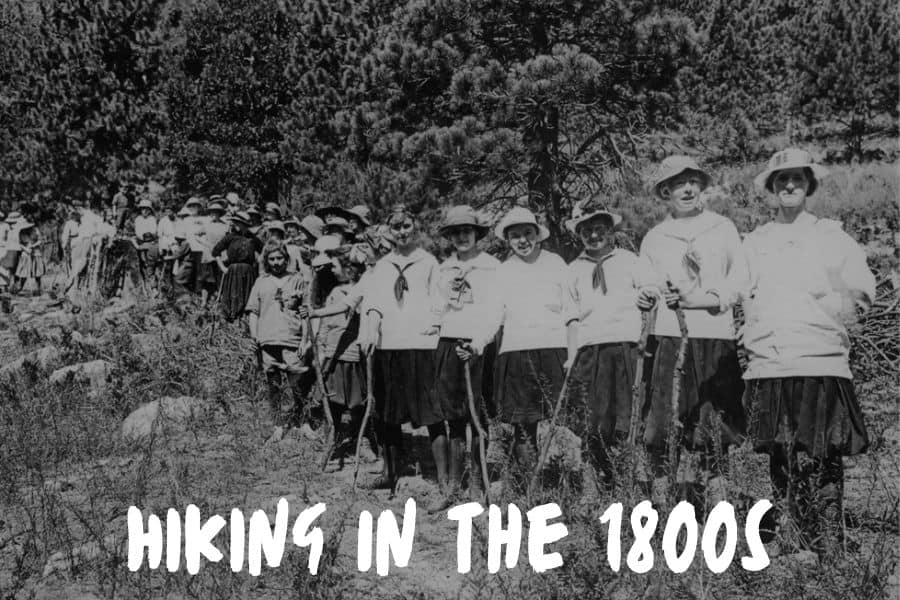
Before the 19th century, walking was not perceived as a recreational activity.
Walking large distances was associated with poverty, as only those who couldn’t afford a horse would go large distances on foot.
But this general perception started to change around the 1800s.
There is evidence to claim hiking began around the latter half of the 18th century in Europe.
However, it was not a widespread activity until the following century.
The Industrial Revolution marked the early years of the 19th century through rapid urbanization.
As cities grew larger, busier, and dirtier, it wasn’t long before people grew tired of living in overpopulated and polluted places.
In such an environment, a walk in nature actually seemed like the perfect recreational activity.
However, that was easier said than done. Especially in England, where the majority of the lands around industrial cities were privately owned.
Of course, trespassing in these areas was illegal. So, all those beautiful woods and meadows weren’t accessible to those eager to spend time in nature.
In many cases, physical barriers like walls and fences ensured no one could cross through private territory.
As a response, walking groups were formed to campaign for their right to walk in the countryside.
Also known as rambling clubs, these groups steadily grew in size, but it took more than half a century before the first national rambling body was formed.
It’s worth noting that while most lands around cities were privately owned, the mountains were still freely accessible.
However, mountaineering required effort, time, and financial means that only the wealthy had.
The first Alpine club was founded in London in 1857. During its first years, the club was strictly for rich gentlemen.
Neither women nor the working class started joining the Alpine club until the next century.
A similar pattern began in the US shortly after, and the first Alpine clubs were formed:
- The Alpine Club – Massachusetts (1863)
- The White Mountain Club – Maine (1873)
- The Rocky Mountain Club – Colorado (1873)
- The Sierra Club – California (1892)
Hiking In The 1900s
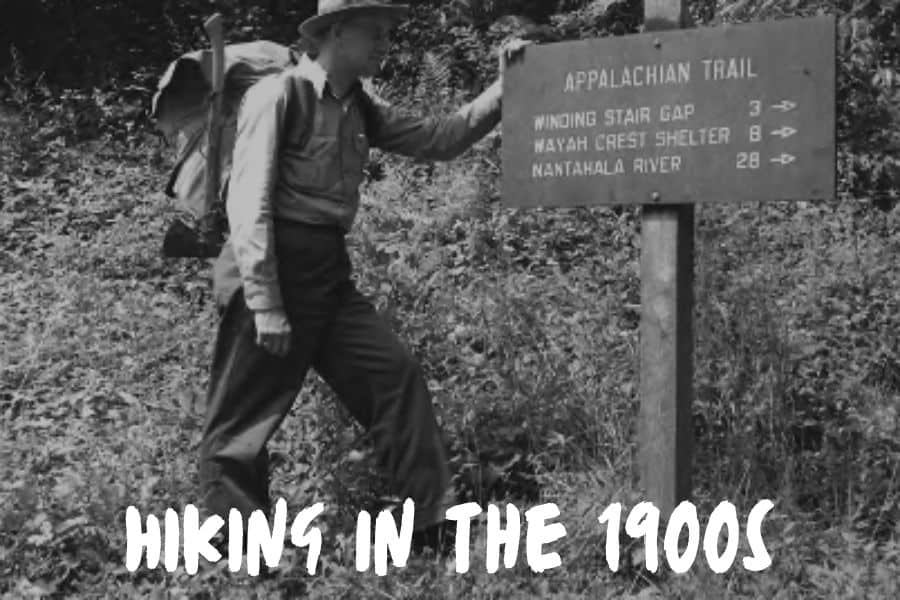
As the fast-paced, industrial city life became more stressful over time, more people felt the need to spend their free time away from all the noise.
By the early 20th century, there was a significant amount of growth in outdoor clubs all over the world.
The first Hiker’s Guide was published in 1909, shortly following Edward Payson Weston’s transatlantic walk from New York to California in just over 100 days.
This first guide was an essential resource for every hiker once it became popularized.
It had all the necessary information detailing where to go and what to expect in the wilderness.
In the US, Boy Scouts and Girl Scouts respectively emerged in 1910 and 1912.
These groups were created to introduce the youth to practical outdoor activities, as well as instill in them a respect and love for nature.
The early 1900s were quite eventful for England’s hiking culture, as well. In 1905, about a dozen of rambling clubs from London formed the Federation of Rambling Clubs.
The purpose of the club was to oversee all the rambling clubs that were emerging throughout the country.
Exactly 30 years later, the National Council of Ramblers’ Federations was formed.
This federation was a national body that would represent all ramblers’ interests and protect their “rights to roam”.
Most long-distance hiking trails were established during the 20th century.
The Appalachian Trail, which is one of the longest, hiking-only footpaths in the world, was established almost a century ago, in 1925.
Only a few years later, YMCA hiking groups started exploring the Pacific Crest Trail. Though, it would be a few more decades before it became an official trail.
Hiking experienced a boom in popularity after WWII. Before the war, paid leave was a perk only white-collar workers enjoyed, but that changed in the post-war era.
With more free time on their hands and better-paying jobs, a large number of city residents started enjoying hiking as their pastime.
Likewise, the higher availability of cars in the second half of the 20th century helped hiking become even more accessible.
Hiking In The 2000s
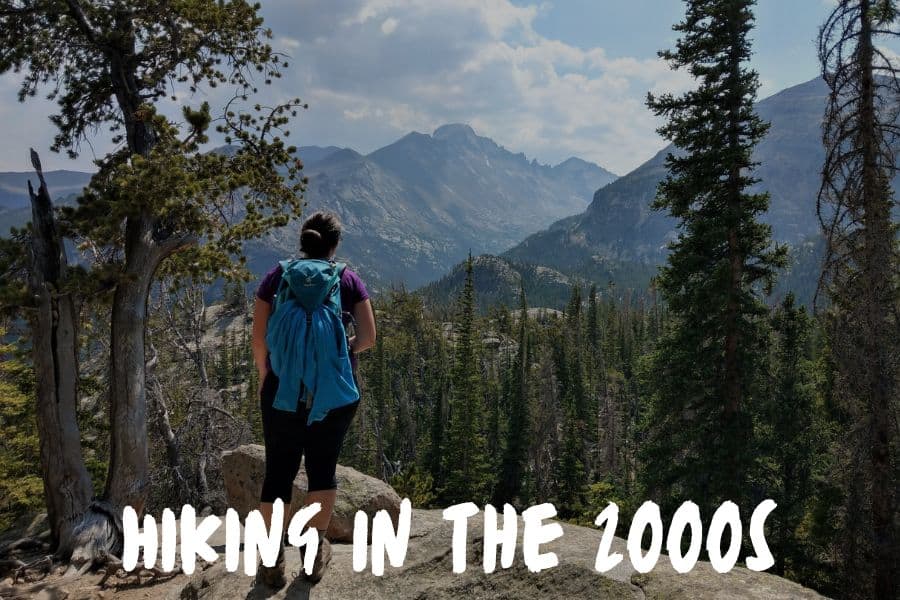
Hiking has constantly grown in popularity since it became a recreational activity.
The technological developments that have come along with the 21st century have only increased its appeal.
Nowadays, hikers can use different gadgets to map their routes, track their progress, and store data for later use.
Not just that, but researching and planning a hike is now easier than ever.
With so much information available online now and in apps, everyone has ample and equal opportunities to prepare for hiking trips.
Arguably, social media is also responsible for the ever-growing hiking popularity.
Seeing your friends having the time of their lives while hiking can definitely make you feel a twinge of jealousy.
Come on, with them posting photos of their beautiful surroundings, who wouldn’t wish to join them?
If we were to look at statistics, it’s clear that the number of hikers grows each year.
But the largest increase in this century was in 2020, a direct result of the COVID-19 pandemic.
After months of lockdown, many longed to get out and enjoy the freedom and fresh air of the great outdoors.
That explains why the number of hikers in the US alone grew from 49.7 to 57.8 million people.
Hiking As A Leisure Activity
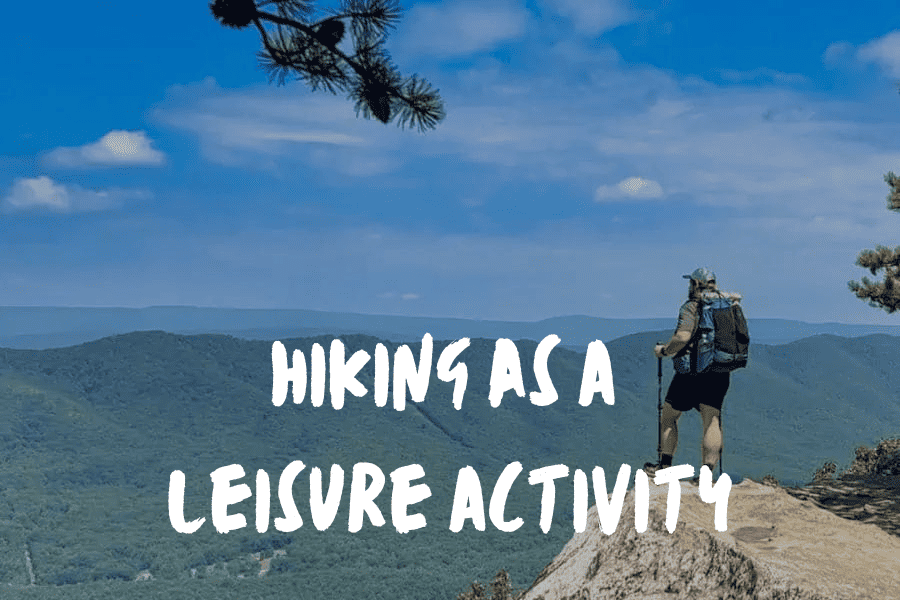
Today, there are over 118.3 million people in the world who practice hiking. That’s quite a number, right?
With so many people enjoying this outdoor activity, it’s no surprise that the hiking gear industry is also on the rise.
According to a 2019 survey, the global hiking equipment market size was estimated at $4.5 billion!
At first thought, this might seem a bit excessive for a leisure activity.
But having proper gear does make hiking even more enjoyable.
Think of it this way – running shoes are fine for shorter hikes on paved trails.
But they surely won’t work for the steepness of the South Kaibab Trail, for instance.
Now, the real question is why do so many people choose hiking as their leisure activity of choice?
Well, it kills several birds with one stone.
Sure, it’s done for pleasure and relaxation, but hiking is also a type of workout – and it can be a challenging one.
But the beauty lies in the fact that you are the one imposing the rules.
You can choose the trail depending on the difficulty you’re aiming for and do it at your own pace.
You make your own rules!
Read: Types of Hiking (24 Different Variations EXPLAINED)
Influence Of Naturalists & Writers
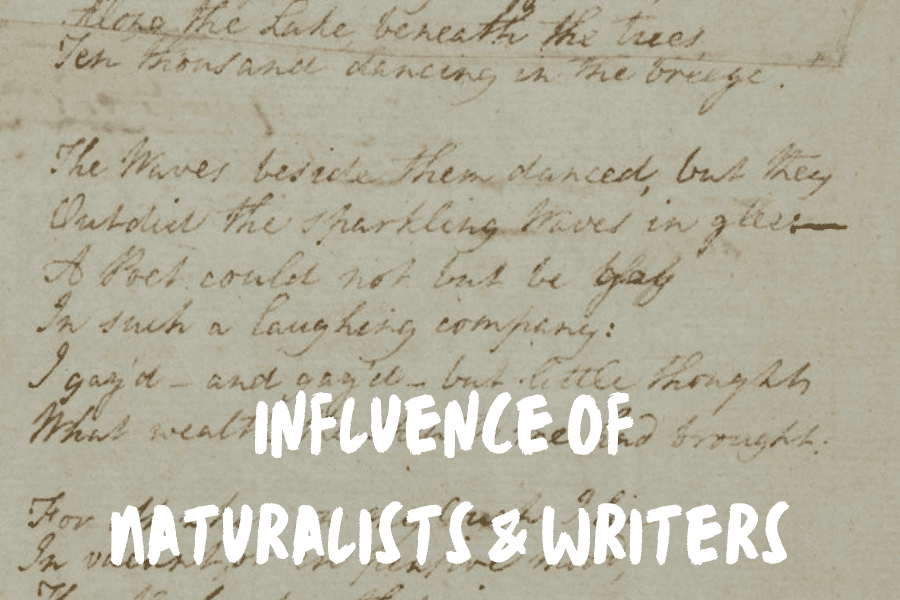
As we already established, walking for leisure gained momentum in the 19th century due to the Industrial Revolution.
But the Romantic movement heavily influenced the perception of the outdoors, as well.
You see, romanticism started around the mid-18th century. It was partly a reaction to the science-focused, philosophical Age of Enlightenment.
Though, it was also a partial response to the cold, manufacturing-focused Industrial Revolution.
Romantics believed that the forward-thinking of the Enlightenment, Era coupled with the urbanization of the Industrial Revolution, made people lose touch with the natural world.
Romantic writers and artists saw nature as a source of healthy emotions and ideas.
In other words, a person’s true self could be found in the wilderness, not in urban surroundings.
One of the most notable examples of one of these Romantic pieces is Spaziergang nach Syrakus (A Stroll to Syracuse) by German author Johann Gottfried Seume in 1803.
In the book, Seume described his nine-month-long trip from Leipzig to Sicily – on foot!
Many other writers were avid walkers, too. William Wordsworth, a pioneer of the Romantic Age in literature, often spent holidays on walking tours.
Through his poems, he shared details of many of his trips around Europe.
Another great example is Robert Louis Stevenson, who’s now considered to be one of the most translated authors in the world.
One of his outdoor classics is his Travels with a Donkey in the Cévennes.
As the name of the book suggests, it tells the story of Stevenson’s 120-mile solo hike through the Cévennes mountains in France in 1878.
The First National Parks
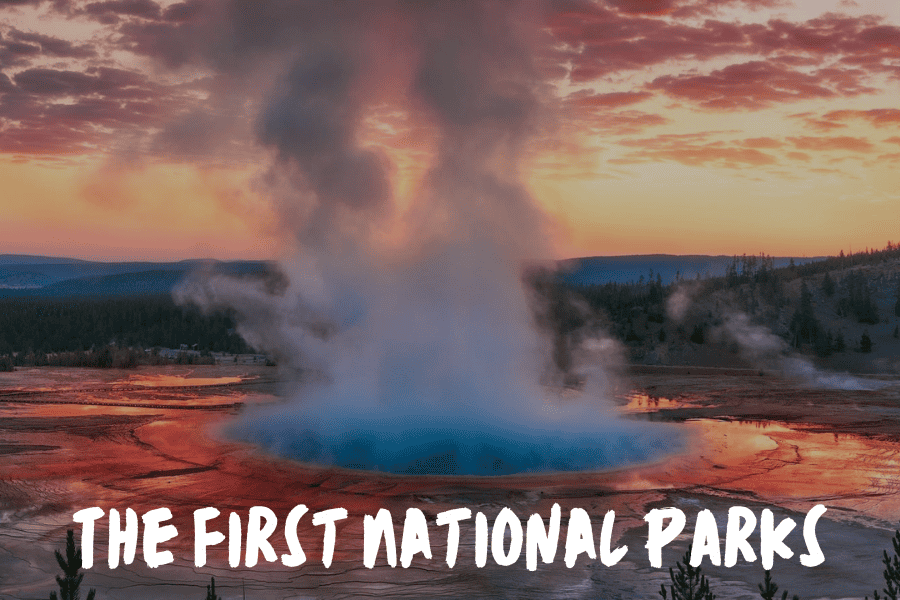
The effects of the Industrial Revolution on nature were obvious even in the early days.
The high demand for coal mining and machinery use led to extremely polluted air in industrial and urban areas.
Because of this, protecting nature from these effects quickly became a goal of many early conservationist movements.
Artist George Catlin had a great solution. He believed that nature was in danger of being destroyed by industrialization and westward expansion.
Catlin was the first to suggest the preservation of large areas of land.
He wrote they should be preserved “by some great protecting policy of government… in a magnificent park… a nation’s Park, containing man and beast, in all the wild[ness] and freshness of their nature’s beauty!”
It wasn’t long before his idea reached the Congress. And in 1872, Yellowstone became the first national park in the world.
As such, it laid the framework for the preservation of natural resources.
Soon, other areas of the States became federally-protected land by becoming national parks.
Some of the earliest were the following:
- Sequoia National Park (1890)
- Yosemite National Park (1890)
- Mt. Rainier National Park (1899)
- Crater Lake National Park (1902)
You can find a comprehensive list of all US national parks by state here.
The Emergence Of Official Hiking Trails
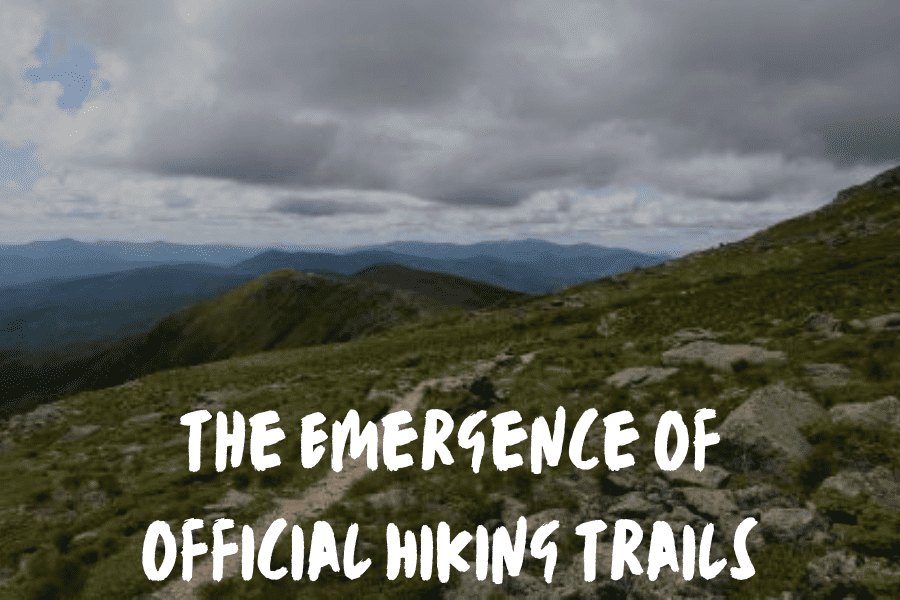
Informal hiking trails existed even before organized rambling and outing clubs.
In the States, the earliest trails were established by Native Americans. They used them for trading, hunting, warfare, and other purposes for centuries.
Many of these informal trails also became migration routes during the 19th century.
In North America, the first official hiking trail was created in 1819 by Abel Crawford and his son Ethan and was named the Crawford Path.
This hiking trail is 8.5 miles long, going from White Mountain Notch where they lived (now called Crawford Notch) to Mount Washington’s summit.
However, it was many years before any official long-distance trails were established.
The US’s first such trail was Vermont’s Green Mountain Club’s Long Trail, built between 1910 and 1930. Soon after, the Appalachian and Pacific Crest Trails were begun
Hotels played a huge role in the development of official hiking trails.
When outdoor activities began rising in popularity, hotels started popping up in frequented locations (like Yosemite Valley or the Grand Canyon).
The first long-distance hiking trail in Europe was built in 1938: the Hungarian National Blue Trail, which is around 62 miles long.
While many long-distance trails in Latin America have existed for centuries, most of them only became official in the 20th century.
The Inca Trail, for instance, is a 26-mile-long path that the Inca civilization used back in the 15th century.
But it wasn’t until the 1970s that this trail garnered international interest. It became so popular that in 2002, the Peruvian government made the decision to limit hiking permits to 500 each day!
Read: Hiking vs Trekking: What’s the Difference?
Impact Of Hiking On Health & Wellness
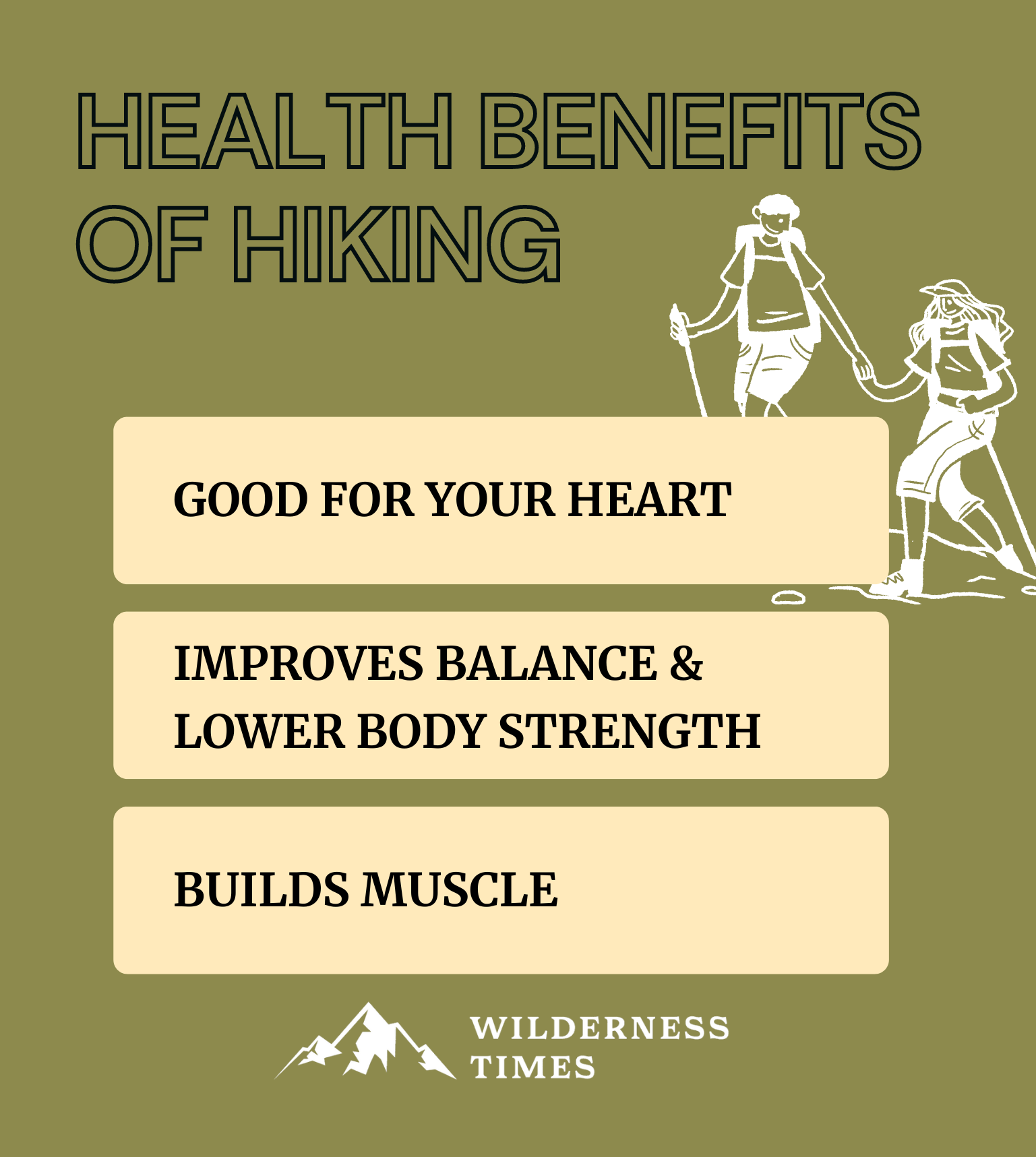
With so many people enjoying hiking, one thing is clear – it’s a fun activity.
But aside from just being enjoyable, hiking does so much for both your physical and mental health.
Physical Health Benefits
First things first, hiking is a great exercise. It is just like walking, but better.
In most cases, you’re walking on uneven terrain, and going up and down inclines is an excellent way to burn calories.
Plus, hiking also improves your balance. By walking on unstable terrain, your leg and core muscles are constantly working, so they get stronger over time.
Aside from making you fit, hiking has other health benefits as well.
According to the National Heart, Lung, and Blood Institute, hiking can lower your blood pressure by up to 10 points!
Not just that, but studies also show that hiking can lower blood sugar and improve glucose tolerance.
That’s why hiking is a great activity for those with diabetes.
Mental Health Benefits
While the physical benefits of hiking might be more apparent, we can’t forget about the mental health benefits it has on us.
Back in the 1800s, people first started hiking to relax from the crazy, fast-paced urban environment. And things are no different today.
A walk in nature can do so much in terms of boosting your mood and improving your mental health.
According to a Standford study, spending time outdoors can ease anxiety, reduce stress, and even lower the risk of depression.
I know it sounds too good to be true, but it is.
Being outdoors and connecting with nature means disconnecting from the urban tech world and enjoying the moment.
And just like the Romantics said, nature is a pure and a spiritual source of renewal.
FAQs
What Were The First Types Of Footwear Used Specifically For Hiking?
The first hiking boots were completely leather, which meant they didn’t have the right grip for tough terrain since they offered no texture.
After a couple of his alpinist friends died because of those shoes, mountaineer Vitale Bramani created a shoe with a textured, rubber sole.
This design is the one we still use today.
How Have Indigenous Cultures Contributed To The Practice & Philosophy Of Hiking?
Even though indigenous cultures were largely hunter/gatherers, they were well aware of the Earth’s fragility.
That’s why they would only take what was needed so that no resources are wasted or over-harvested.
This traditional, sustainable approach is also at the core of the hiking philosophy.
You can only be one with nature if you ensure it’s preserved from human impact.
Have Any Wars Or Military Practices Influenced The Development Of Hiking?
WWII had the most significant influence on hiking’s popularity.
Post-war mechanization of labor, reduced working hours, and widespread car availability made hiking more possible for people regardless of their income.
What Are Some Of The Most Famous Hikes From History & Why Are They Significant?
The California National Historic Trail was a migratory route in the 1840s, with around 250,000 emigrants using it to reach the west coast.
Another famous historic hike was from 1846 to 1869, when about 70,000 Mormons followed the Mormon Pioneer National Historic Trail.
To Sum Things Up
Even though walking long-distance is nothing new, doing so for leisure only became thought around the 1800s.
But hiking has constantly grown in popularity since then.
And now, two centuries later, it is one of the most popular pastimes and also a billion-dollar industry.
More About Hiking
- How Many Miles Can You Hike In a Day? (Tips, Strategies, & Recommendations)
- Hiking vs Trekking: What’s the Difference?
- 60+ Interesting and Fun Facts About Hiking
Next up: Camping History: From Survival Necessity to Popular Leisure Activity
Sources
- Britannica, T. Editors of Encyclopaedia. “hiking.” brittannica.com. Encyclopedia Britannica, February 16, 2024. https://www.britannica.com/sports/hiking.
- “Creation of Trails.” nps.gov. National Park Service, June 15, 2018. https://www.nps.gov/subjects/trails/creation-of-trails.htm.
- “Day Hike – South Kaibab Trail Grand Canyon National Park.” nps.gov. National Park Service, U.S. Department of the Interior, Accessed June 12, 2024. https://www.nps.gov/grca/planyourvisit/upload/southkaibabtrail.pdf.
- “Diabetes & Hiking – How to Plan a Perfect Hiking Trip.” apollosugar.com. Apollo Sugar, Accessed June 12, 2024. https://apollosugar.com/food-fitness/exercise-weight-loss/diabetes-hiking-how-to-plan-a-perfect-hiking-trip/.
- “Hiking Gear & Equipment Market Size[…].” grandviewresearch.com. Grand View Research, Accessed June 12, 2024. https://www.grandviewresearch.com/industry-analysis/hiking-gear-equipment-market.
- “Hiking In America.” foresthistory.org. Forest History Society, Accessed June 12, 2024. https://foresthistory.org/research-explore/us-forest-service-history/policy-and-law/recreation-u-s-forest-service/hiking-in-america/.
- “Hiking Statistics and Facts 2024: A Brief Insight.” outsideforcefitness.com. Outside Force Fitness, March 1, 2024. https://outsideforcefitness.com/hiking-statistics-and-facts/.
- “History of Ramblers in London.” innerlondonramblers.org.uk. Inner London Ramblers, Accessed June 12, 2024. https://www.innerlondonramblers.org.uk/about-us2/history-of-ramblers-in-london.html.
- Jordan, Rob. “Stanford Researchers Find Mental Health Prescription: Nature.” Stanford News. Stanford Woods Institute for the Environment, June 30, 2015. https://news.stanford.edu/2015/06/30/hiking-mental-health-063015/.
- Muzquiz, Albert. “The Evolution of Hiking Boots.” heddels.com. Heddels, June 7, 2018. https://www.heddels.com/2018/06/evolution-of-hiking-boots/.
- “Oldest Continuously Used and Maintained Hiking Trail Celebrates 200 Years.” fs.usda.gov. Forest Service, US Department of Agriculture, August 23, 2019. https://www.fs.usda.gov/inside-fs/delivering-mission/deliver/oldest-continuously-used-and-maintained-hiking-trail.
- “Origin of the National Park Idea.” nps.gov. National Park Service, March 10, 2016. https://www.nps.gov/articles/npshistory-origins.htm.
- Osborn, Jacob. “49 Most-translated Authors from around the World.” stacker.com. Stacker. April 3, 2018. https://stacker.com/art-culture/49-most-translated-authors-around-world?page=3.
- “Our History.” ramblers.org.uk. Ramblers Association, Accessed June 12, 2024. https://www.ramblers.org.uk/about-us/our-history.
- “Prevention, Detection, Evaluation, and Treatment of High Blood Pressure.” JNC 7 Express, (2003). Accessed June 12, 2024. https://www.nhlbi.nih.gov/files/docs/guidelines/express.pdf.
- Ralph S. “A History of Hiking: The Driving Force Behind Our Footprints.” silverlight.store. Silverlight, December 9, 2021. https://silverlight.store/history-of-hiking/#:~:text=While%20there%20are%20some%20scattered,change%20during%20the%20Romantic%20era.
- Reisler, Jim. Walk of Ages: Edward Payson Weston’s Extraordinary 1909 Trek Across America. University of Nebraska Press, 2015. https://doi.org/10.2307/j.ctt1d9njqn.
- “The Story Behind: The Alpine Club.” montane.com. Montane, Accessed June 12, 2024. https://montane.com/blogs/blog/the-story-behind-the-alpine-club.
- White, Matthew. “The Enlightenment.” bl.uk. British Library, June 21, 2018. https://www.bl.uk/restoration-18th-century-literature/articles/the-enlightenment#:~:text=The%20Enlightenment%20%E2%80%93%20the%20great%20%27Age,the%20Napoleonic%20Wars%20in%201815.


